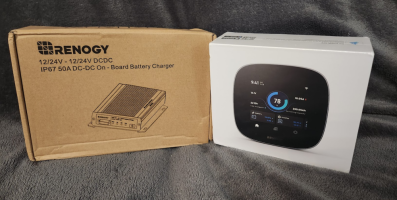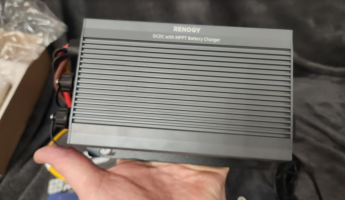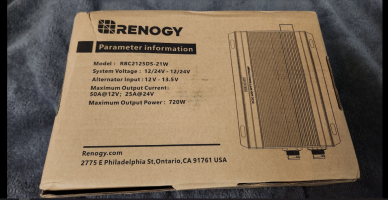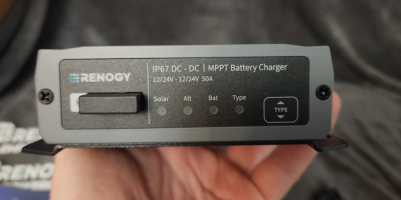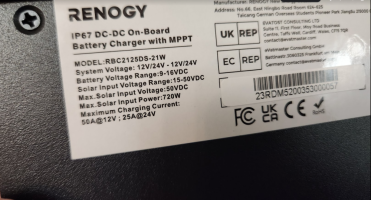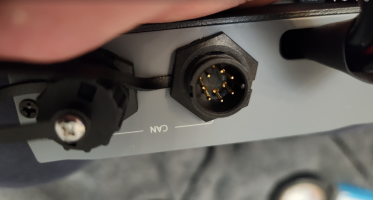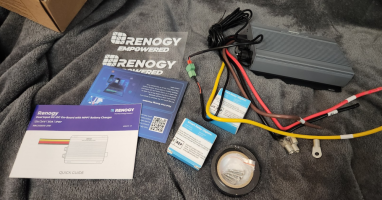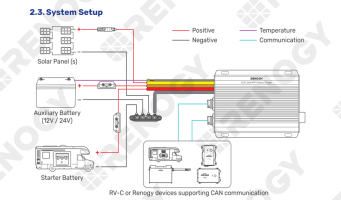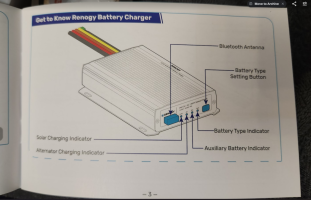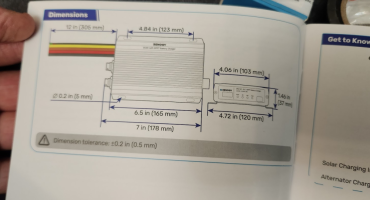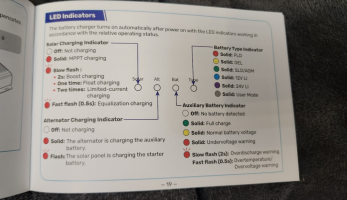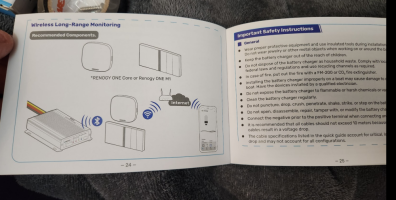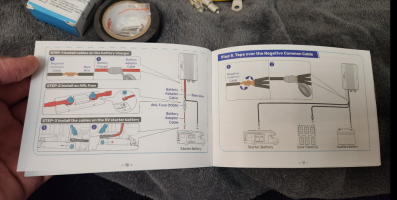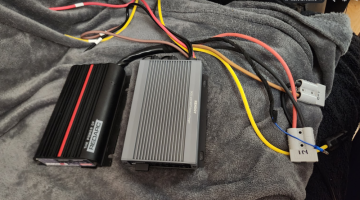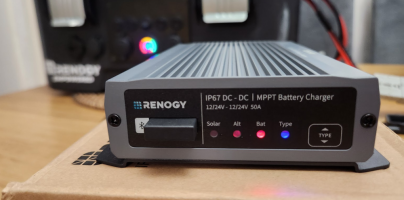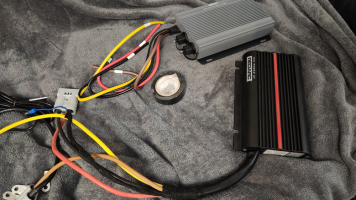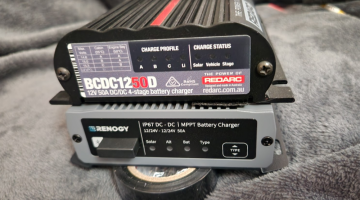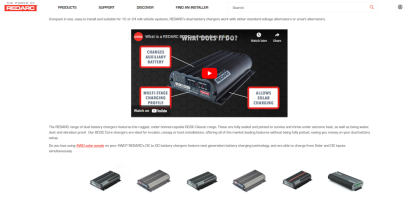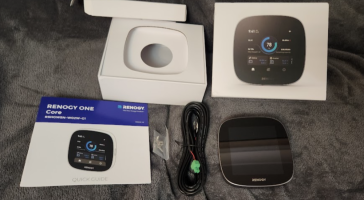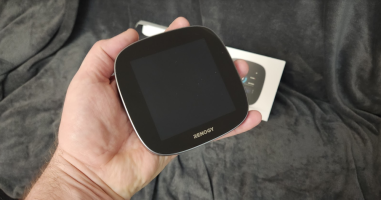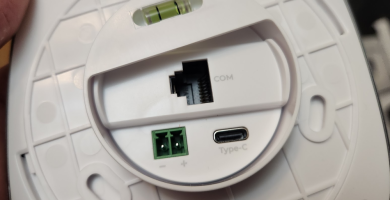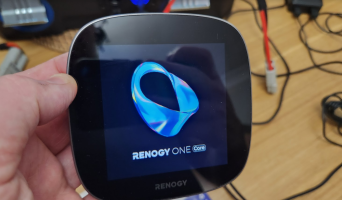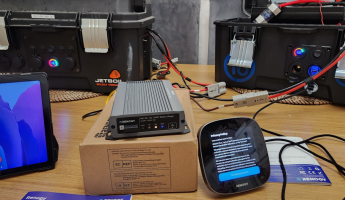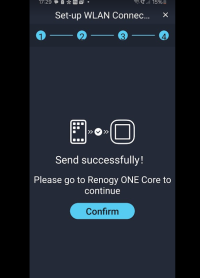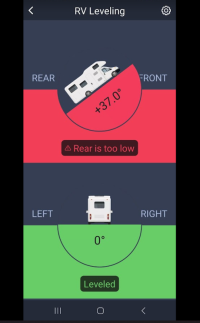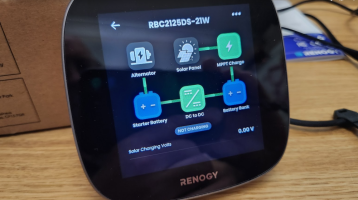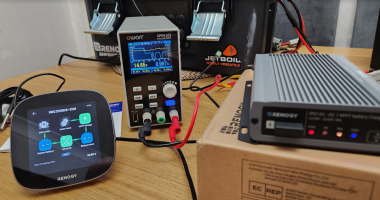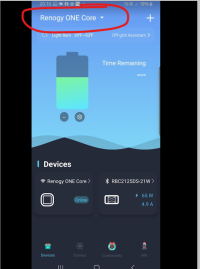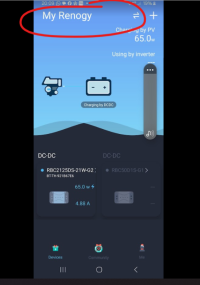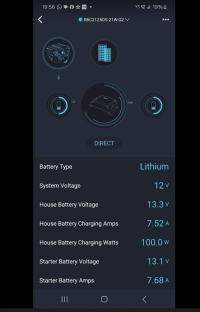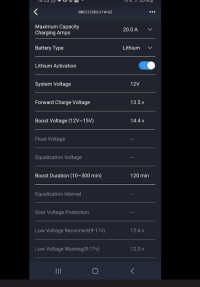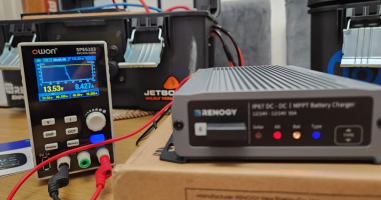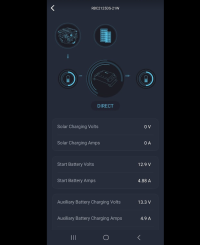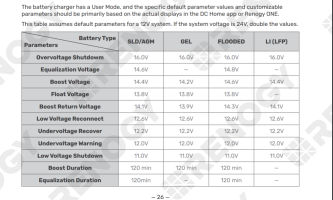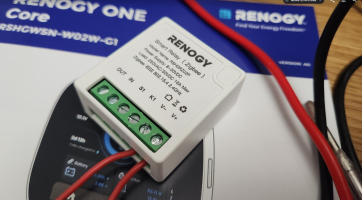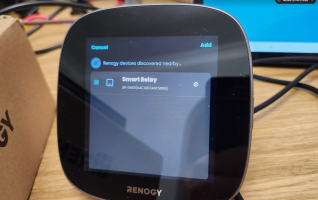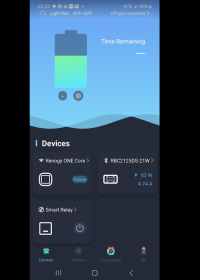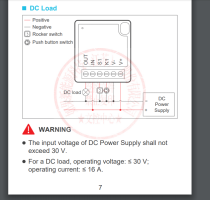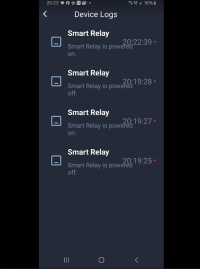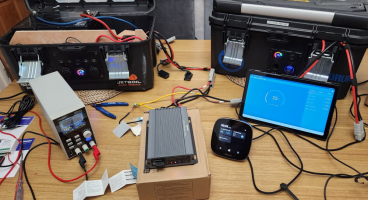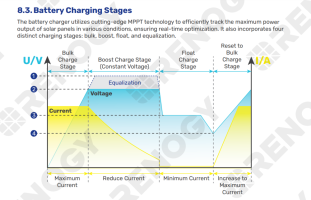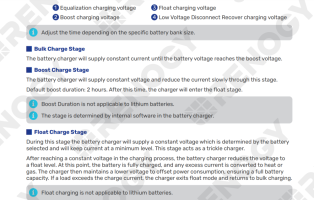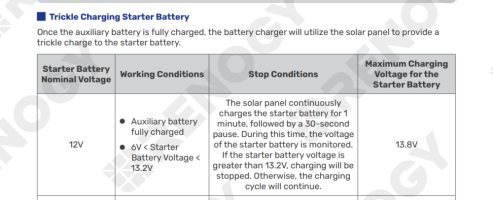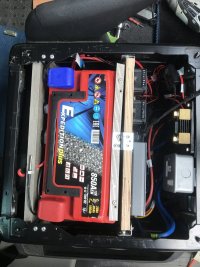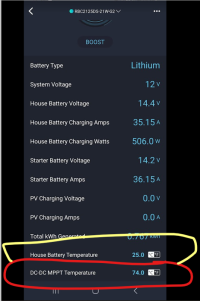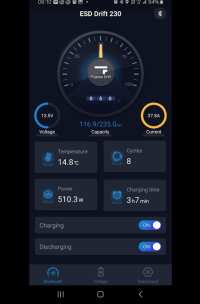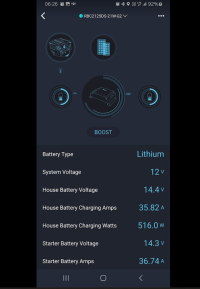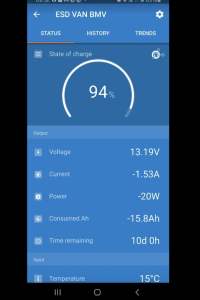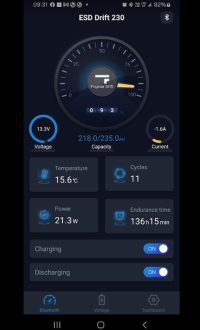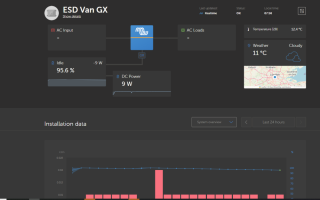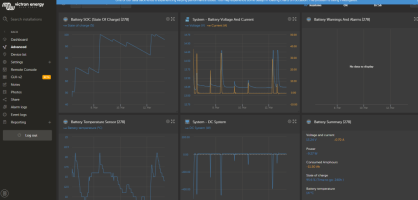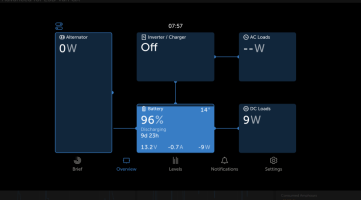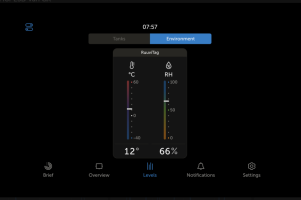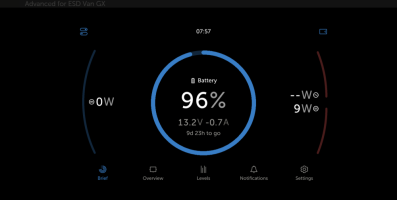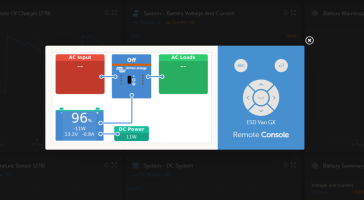[Guide] Renogy IP67 50A DC-DC Charger + MPPT (for leisure battery) -- How We Done It --
..
with thanks to a Forum Member for buying this for himself, but sending it to me first to test it out.
we have the new
..
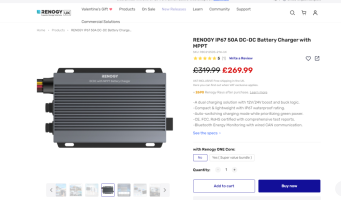
RENOGY 12V/24V IP67 50A DC-DC Battery Charger with MPPT
Introducing the RENOGY IP67 50A DC-DC Dual Input Battery Charger with MPPT, a slim, waterproof dual charging solution perfect for confined spaces. Equipped with intelligent boost and buck logic, it seamlessly accommodates 12V/24V-12V/24V voltage systems, elevating DIY possibilities to the uttermost. Renogy's exclusive intelligent charging logic prioritizes solar energy, efficiently charging your house battery while easing the load on generators. This innovative product combines vehicle and solar power, automatically adjusting modes based on sunlight intensity. Maximizing energy utilization, it boasts a robust 50A current and an impressive 720W output power. Renogy IP67 Dual Input Battery Charger seamlessly switches to solar charging in ample sunlight and smoothly transitions to generator charging during low light, ensuring uninterrupted device power. Embrace an eco-conscious charging experience without compromising efficiency or space, redefining sustainable energy utilization.
-A dual charging solution with 12V/24V boost and buck logic.
-Compact & lightweight with IP67 waterproof rating.
-Auto-switching charging mode while prioritizing green power.
-CE, FCC, RoHS certified with comprehensive test reports.
-Bluetooth Energy Monitoring with wired CAN communication.
++++++++++
SPECIFICATION
System Voltage: 12V/24V - 12V/24V
Solar Input Voltage: 50 VDC
Output Voltage: 9-16 VDC
Alternator Input: 13.5-16 VDC
Maximum Output Current Rating: 50A
Output Power: 720W
Battery Types: AGM/SLD , GEL ,FLD ,LI,USER
Input Fuse Rating: 75A-100A
Output Fuse Rating: 75A-100A
Charging Efficiency: 0.94
Temperature Compensation: -3mV / ℃ / 2V (Non-Lithium);0mV / ℃ / 2V; no compensation (Lithium)
Idle Power Consumption: <100mA
GENERAL DATA
Terminal Range: 8AWG-4AWG
Communication Protocol: Modbus ; RV-C
Operating Temperature Range: '-31℉ to 176℉/-35℃ to 80℃
Storage Temperature Range: -40℉ to 176℉/-40℃ to 80℃
Humidity: 0%-95%, No Condensation
Maximum Operating Altitude: 3500m
Enclosure Rating: IP67
Dimensions: 7.01 x 4.78 x 1.47 in/178.2 x 121.5 x 37.5mm
Weight: 4.10 lb / 1.86 kg
Certification: CE;RoHS;FCC Part 15 class B
++++++++++
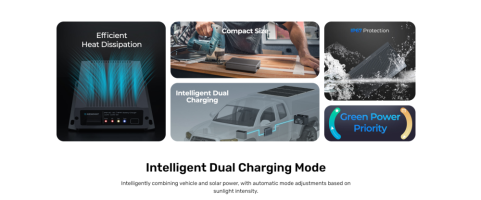
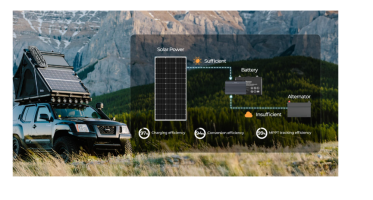
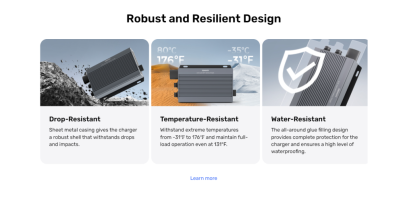
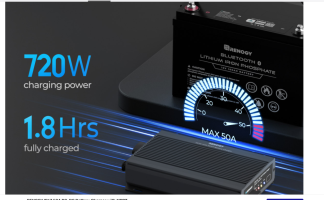

 uk.renogy.com
uk.renogy.com
+++

+++
.
..
with thanks to a Forum Member for buying this for himself, but sending it to me first to test it out.
we have the new
..
RENOGY IP67 50A DC-DC Battery Charger with MPPT

RENOGY 12V/24V IP67 50A DC-DC Battery Charger with MPPT
Introducing the RENOGY IP67 50A DC-DC Dual Input Battery Charger with MPPT, a slim, waterproof dual charging solution perfect for confined spaces. Equipped with intelligent boost and buck logic, it seamlessly accommodates 12V/24V-12V/24V voltage systems, elevating DIY possibilities to the uttermost. Renogy's exclusive intelligent charging logic prioritizes solar energy, efficiently charging your house battery while easing the load on generators. This innovative product combines vehicle and solar power, automatically adjusting modes based on sunlight intensity. Maximizing energy utilization, it boasts a robust 50A current and an impressive 720W output power. Renogy IP67 Dual Input Battery Charger seamlessly switches to solar charging in ample sunlight and smoothly transitions to generator charging during low light, ensuring uninterrupted device power. Embrace an eco-conscious charging experience without compromising efficiency or space, redefining sustainable energy utilization.
-A dual charging solution with 12V/24V boost and buck logic.
-Compact & lightweight with IP67 waterproof rating.
-Auto-switching charging mode while prioritizing green power.
-CE, FCC, RoHS certified with comprehensive test reports.
-Bluetooth Energy Monitoring with wired CAN communication.
++++++++++
SPECIFICATION
System Voltage: 12V/24V - 12V/24V
Solar Input Voltage: 50 VDC
Output Voltage: 9-16 VDC
Alternator Input: 13.5-16 VDC
Maximum Output Current Rating: 50A
Output Power: 720W
Battery Types: AGM/SLD , GEL ,FLD ,LI,USER
Input Fuse Rating: 75A-100A
Output Fuse Rating: 75A-100A
Charging Efficiency: 0.94
Temperature Compensation: -3mV / ℃ / 2V (Non-Lithium);0mV / ℃ / 2V; no compensation (Lithium)
Idle Power Consumption: <100mA
GENERAL DATA
Terminal Range: 8AWG-4AWG
Communication Protocol: Modbus ; RV-C
Operating Temperature Range: '-31℉ to 176℉/-35℃ to 80℃
Storage Temperature Range: -40℉ to 176℉/-40℃ to 80℃
Humidity: 0%-95%, No Condensation
Maximum Operating Altitude: 3500m
Enclosure Rating: IP67
Dimensions: 7.01 x 4.78 x 1.47 in/178.2 x 121.5 x 37.5mm
Weight: 4.10 lb / 1.86 kg
Certification: CE;RoHS;FCC Part 15 class B
++++++++++





RENOGY IP67 50A DC-DC Battery Charger with MPPT
Discover the Renogy IP67 50A DC-DC battery charger with MPPT. Efficient 12V to 12V DC charging for reliable power management.
 uk.renogy.com
uk.renogy.com
+++

I can get you a discount at Renogy United Kingdom
Hey, if you're ever looking for Renogy United Kingdom products, let me know and I can get you a discount at Renogy United Kingdom. Here's a coupon if you need one now:
renogyuk.refr.cc
+++
.

